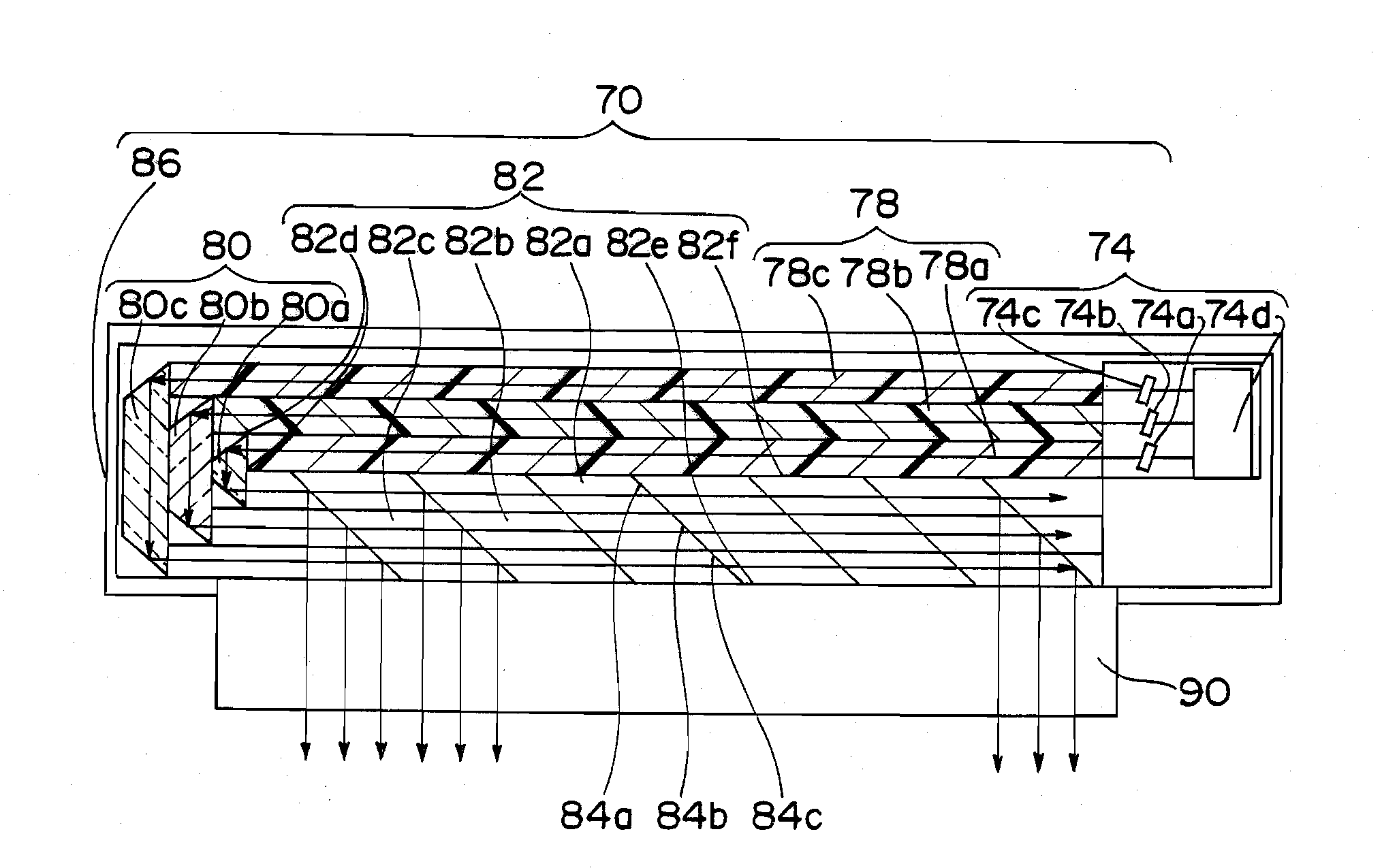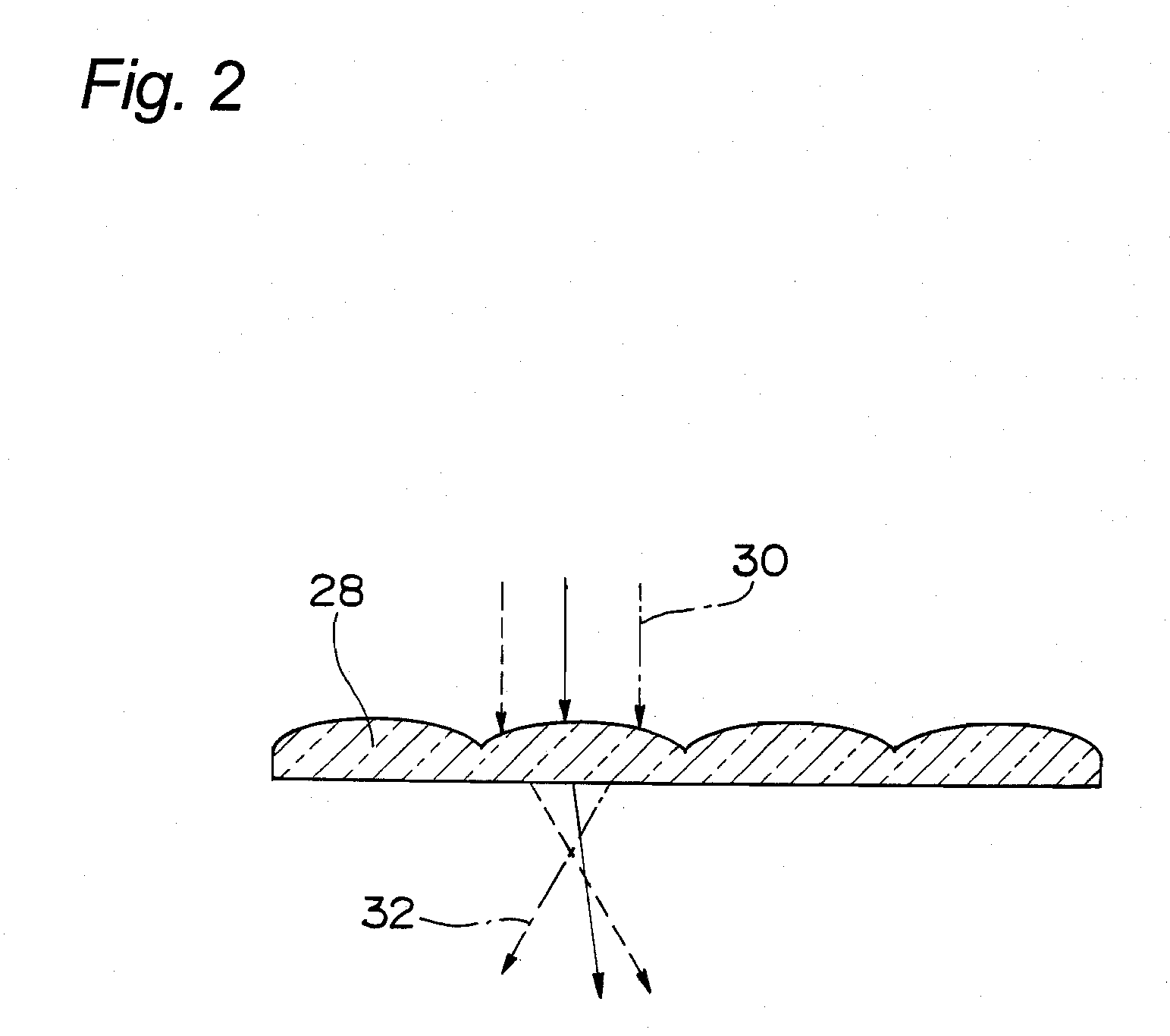Surface illuminator and liquid crystal display using same
a surface illuminator and liquid crystal display technology, applied in the direction of lighting and heating apparatus, instruments, lenses, etc., can solve the problems of uniform luminance, extreme deterioration of the display image, and example of using laser light sources in backlight illumination, etc., to reduce speckle noise, uniform luminance over a large area, excellent color purity
- Summary
- Abstract
- Description
- Claims
- Application Information
AI Technical Summary
Benefits of technology
Problems solved by technology
Method used
Image
Examples
first embodiment
[0135]FIG. 1A and FIG. 1B are diagrams illustrating a surface illuminator according to a first embodiment of the present invention. FIG. 1A is a plan view illustrating an outline of the structure, and FIG. 1B is a schematic sectional view along the line A-A of FIG. 1A.
[0136]As illustrated in FIG. 1A, the surface illuminator 1 of the first embodiment has a structure as described below. A surface illuminator 1 has laser light sources 12a, 12b, and 12c. A laser light source 12 has three light sources such as a red light (R-light) source 12a, a green light (G-light) source 12b, and a blue light (B-light) source 12c that emit light of three primary colors.
[0137]In addition, when FIG. 1B is referred, the surface illuminator 1 includes a first plate-shaped light guide (first light guide) 24 whereby the laser beam emitted from the laser light sources 12a to 12c is made to be incident from end face portion 24d, and are made to emit from a major surface. When FIG. 1A is referred again, the su...
second embodiment
[0161]FIG. 4A and FIG. 4B are diagrams illustrating a surface illuminator 2 according to a second embodiment of the present invention. FIG. 4A is a schematic plan view illustrating the structure, and FIG. 4B is a schematic sectional view along the line B-B of FIG. 4A.
[0162]The surface illuminator 2 of the second embodiment is different from the surface illuminator 1 of the first embodiment in the point that a structure of a first light guide plate 36 is different from the structure of the first light guide plate 24. Namely, in the second embodiment, a plurality of semi-transmissive mirrors 36a are arranged inside the first light guide plate 36 at a constant pitch. Then, the laser beam incident on the first light guide plate 36 are partially reflected by the semi-transmissive mirrors 36a, in a direction of a major surface (direction of the diffusion plate 36b) of the first light guide plate 36. Note that, in the semi-transmissive mirrors 36a, their reflectances are differentiated at ...
third embodiment
[0164]FIG. 5 is a schematic plan view illustrating a structure of a surface illuminator 3 according to a third embodiment of the present invention. Also in this illustration for the surface illuminator 3, each surface of the casing 26 and the housing 18 is cut out, thereby making it easy to understand an internal structure.
[0165]The surface illuminator 3 of the third embodiment has a beam scan section 38 having a different structure from that of the beam scan section 16 of the first embodiment. In fact, the cylindrical lens 16b is used in the beam scan section 16 of the surface illuminator 1 of the first embodiment. However, in the surface illuminator 3 of the third embodiment, instead of the cylindrical lens 16b, a lenticular lens 38b is used. The laser beam is reflected by the reflection mirrors 38a of the beam scan section 38, and then made to be incident on the lenticular lens 38b. The laser beam incident onto the lenticular lens 38b is spread one-dimensionally and is made to be...
PUM
| Property | Measurement | Unit |
|---|---|---|
| time | aaaaa | aaaaa |
| optical | aaaaa | aaaaa |
| angle | aaaaa | aaaaa |
Abstract
Description
Claims
Application Information
 Login to View More
Login to View More - R&D
- Intellectual Property
- Life Sciences
- Materials
- Tech Scout
- Unparalleled Data Quality
- Higher Quality Content
- 60% Fewer Hallucinations
Browse by: Latest US Patents, China's latest patents, Technical Efficacy Thesaurus, Application Domain, Technology Topic, Popular Technical Reports.
© 2025 PatSnap. All rights reserved.Legal|Privacy policy|Modern Slavery Act Transparency Statement|Sitemap|About US| Contact US: help@patsnap.com



